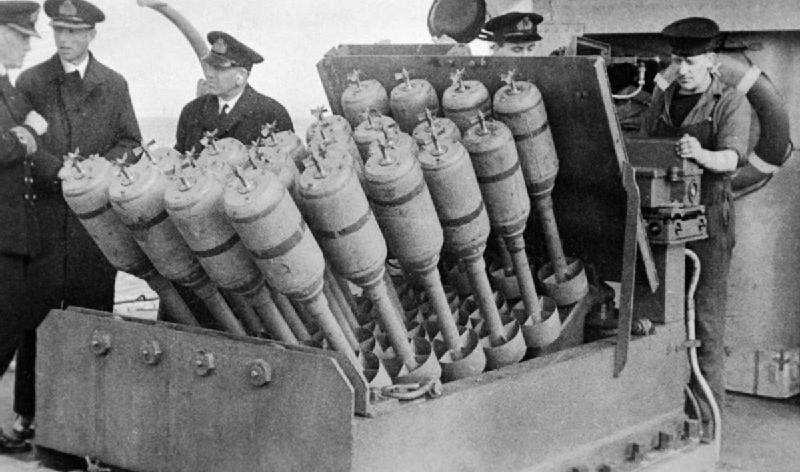CNS Almirante Riveros (DDL-1940/41)
Back to Chilean Navy page
The two battlecruisers (Coquimbo and Capitan Prat) had sucked all the funds out
of the Chilean Navy budget. The Navy needed new cruisers to replace the Santiago
class and more destroyers to replace the Almirante Lynch class destroyer
leaders. The Chileans could not afford both so a large destroyer leader that was
actually bigger than the Santiago class cruisers was ordered. Magnificent ships
they would turn out to be.

What was considered the only drawback was the 4" main armament. But these Mk XX
twin 4" turrets were a cut above the 4" twin Mk XVI twins fitted to the upgraded
Serrano class. In perfect conditions the Mk XVI would fire at 16 rounds per
minute (RPM), while in the same perfect conditions the Mk XX turrets would fire
at 24 RPM. In normal conditions this would be 12 and 20 RPM. The Mk XX was power
everything but not quite automatic. Extra large magazines were required and
accounted for the extra size of the hull. Eventually the quad 2 pounder guns
were replaced with twin Hazemeyer 40mm radar controlled mountings and the twin
20mm would be replaced with 40mm single mountings. The single 20mm were not
replaced. Fitted with Hedgehog units beside the bridge in late 1941, the advent
of the Hedgehog increased the chance of a U-boat kill many times.
.png)

Hedgehog was a great advance in anti-submarine weaponry. Depth charge attack had
about a 7% chance of success, Hedgehog raised that to almost 30%. The
anti-submarine war went backwards and forwards. The U-boats had the early
advantage but there weren't enough of them. When there were enough U-boats,
technical and escort numbers were enough to keep the balance. Technical advances
kept coming for both sides. The schnorchel allowed the U-boats to stay dived
longer, while advances in asdic and Hedgehog allowed the escorts to find and
destroy the U-boats in greater numbers than before. During this phase the Allies
finally got enough escorts to sea to be able to allow for U-boat hunting groups
to be formed.
Captain Walker's group did exceptionally well. Then the Germans countered
with the Type XXI U-boats and thankfully for the Allies not enough could be got
to sea to make a difference. Our old mate Hitler cost Germany the war with his
'No research and development that took more than 12 months to be proceeded with'
rule at the Fall of France robbed the Germans of all sorts of development
opportunities. Including jets, type XXI, radar, rocketry, nuclear, etc. That
rule applied till the attack on Russia (Operation Barbarossa) in June 1941. That
12 months gave the Allies the time it needed to gain the technical advantage
which they then never lost. (My personal view).
| Displacement |
3100 tons std, 3550 tons full load |
| Length |
425 ft |
| Breadth |
45 ft |
| Draught |
14 ft |
| Machinery |
2 shaft steam turbines, 60,000shp |
| Speed |
34 knots |
| Range |
6000 miles at 12 knots |
| Armament |
As completed
8 x 4" (4x2)
8 x 2pd AA (2x4)
12 x 20mm (5x2. 2x1)
|
As completed
8 x 4" (4x2)
4 x 40mm Hazemeyer (2x2)
5 x 40mm (5x1)
2 x 20mm (2x1) |
| Torpedoes |
10 x 21" (2x5) |
| Complement |
240 |
| Notes |
Almirante Riveros (1940)
Alm. 1940
Alm 1941
Alm 1941 |
.png)
I have tried a 1950's version. Limbo anti-submarine mortar (2x3). Mk V 40mm,
three twins. Mk XX 4" (2x2). Two 40mm singles beside the bridge. Two twin rocket
assisted homing torpedoes (RAT's), can act as either anti-ship or anti-sub.
Rocket motor extends the launch range out to 40,000 yards at a much faster rate
than a torpedo that uses mainly underwater as its mode of travel. (Thinking Long
Lance Japanese torpedoes) The main change is the enhanced radar and sonar
systems to assist each type of weapon to achieve optimum performance.
Back to Chilean Navy page

.png)

.png)